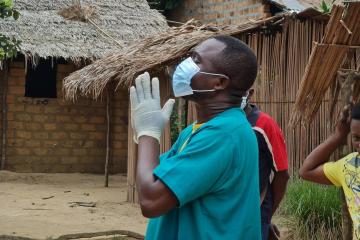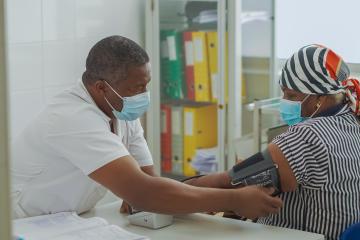Novel and emerging tobacco products are the subject of a new WHO report that looks at a range of issues, from the harm caused by toxic ingredients and nicotine exposure to how, with hardly any regulation, new nicotine and tobacco products are aggressively marketed to potential users, including children and adolescents.
The WHO study group on tobacco product regulation aims to inform policy-makers of these products’ scientific background and urges them to bridge the regulatory gaps for new nicotine and tobacco products. These include electronic nicotine delivery systems (ENDS), electronic non-nicotine delivery systems (ENNDS) and heated tobacco products (HTPs).
Tobacco kills more than 8 million people a year, with more than 7 million of those deaths attributed to direct tobacco use and about 1.3 million – to exposure of non-smokers to second-hand smoke. Tobacco also eventually kills up to half of its users and therefore remains a global health emergency.
Tobacco control must be comprehensive
One of the main recommendations in the new report is that policy-makers should maintain focus on evidence-based measures to reduce tobacco use, as outlined in the WHO Framework Convention on Tobacco Control (WHO FCTC). This includes novel and emerging tobacco products, which are being pushed by the tobacco industry.
The report also highlights the following recommendations:
- to apply the most restrictive tobacco control regulations to HTPs (including the devices), as appropriate under national laws, taking into account a high level of protection for human health;
- to prohibit all manufacturers and associated groups from making claims about reduced harm of HTPs, as compared to other products;
- to ensure that the public is well informed about the risks associated with using HTPs, including the risks of dual use with conventional cigarettes and other smoked tobacco products;
- to rely on and support independent data and research on the health impact of using heated tobacco products;
- to require tobacco manufacturers to disclose all product information;
- to ban all commercial marketing of e-cigarettes and HTPs, including in social media and through organizations funded by and associated with the tobacco industry;
- to prohibit the sale of e-cigarettes in which the user can control device features and liquid ingredients; and
- to prohibit the addition of pharmacologically active substances such as cannabis and tetrahydrocannabinol (in jurisdictions where they are legal) to e-cigarettes.
Tobacco use as a global health emergency
Countries are urged to implement the new report’s recommendations. There is sufficient information about nicotine and tobacco products to act to protect the health of their populations, especially younger generations.
The report acknowledges there is still more to be learned about these products as they evolve. Further independent research is necessary to explore the intricacies of ENDS, ENNDS and HTPs, particularly marketing strategies and prevalence of use.
There are more than a billion tobacco users on the planet, and millions of users of newer products. The collective harm to people’s health caused by tobacco and related products is profound. The public health community must answer the call to implement evidence-based policies and recommendations – such as those outlined in the WHO FCTC – to put a stop to the tobacco industry and save lives.
Note: This article have been indexed to our site. We do not claim legitimacy, ownership or copyright of any of the content above. To see the article at original source Click Here












![PEBMED and HA: study on the health of the transgender population [podcast] thumbnail](https://img.pebmed.com.br/wp-content/uploads/2021/09/23173821/22Portal.jpg.webp)
